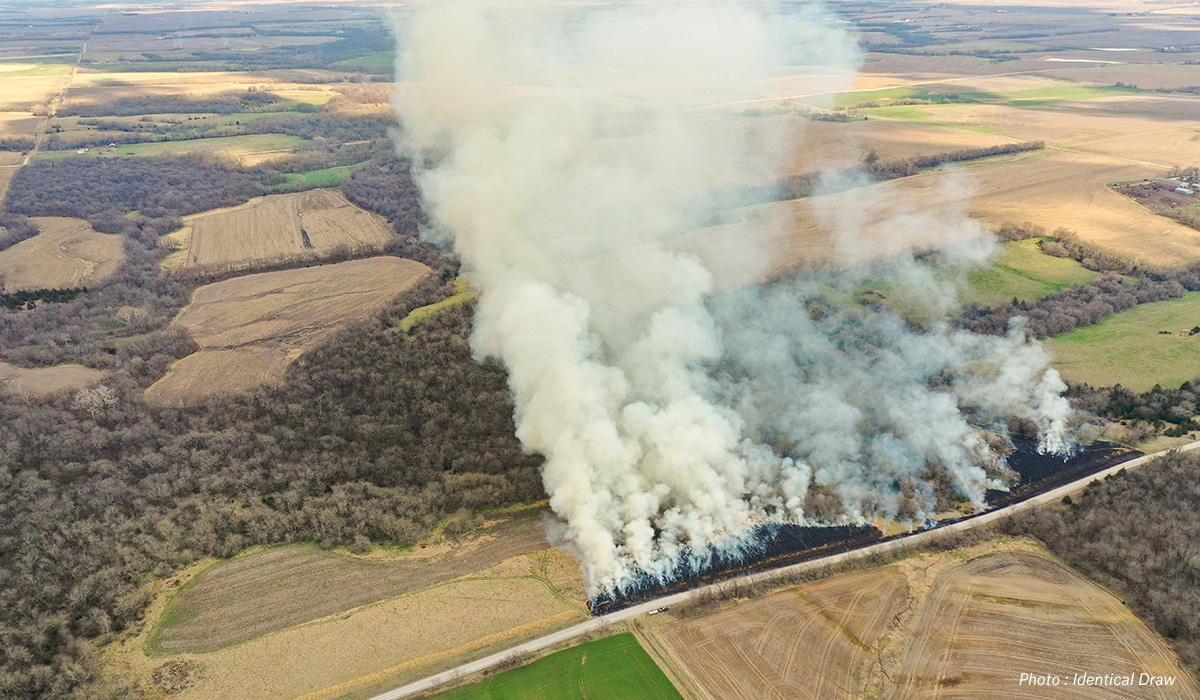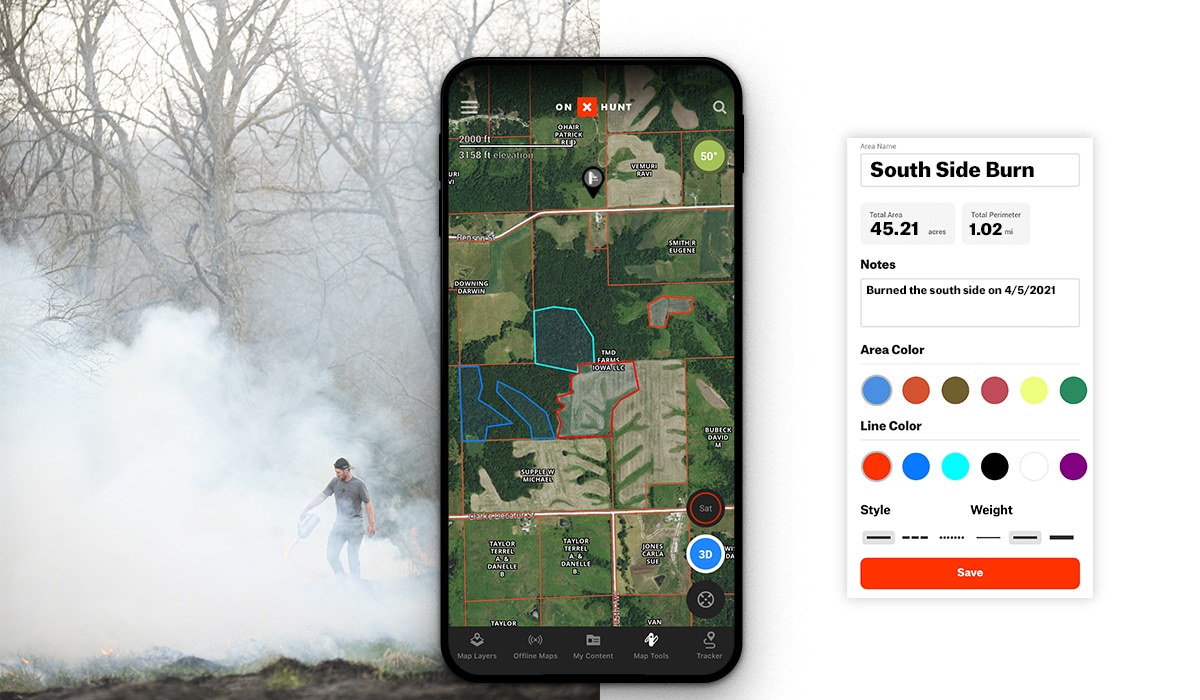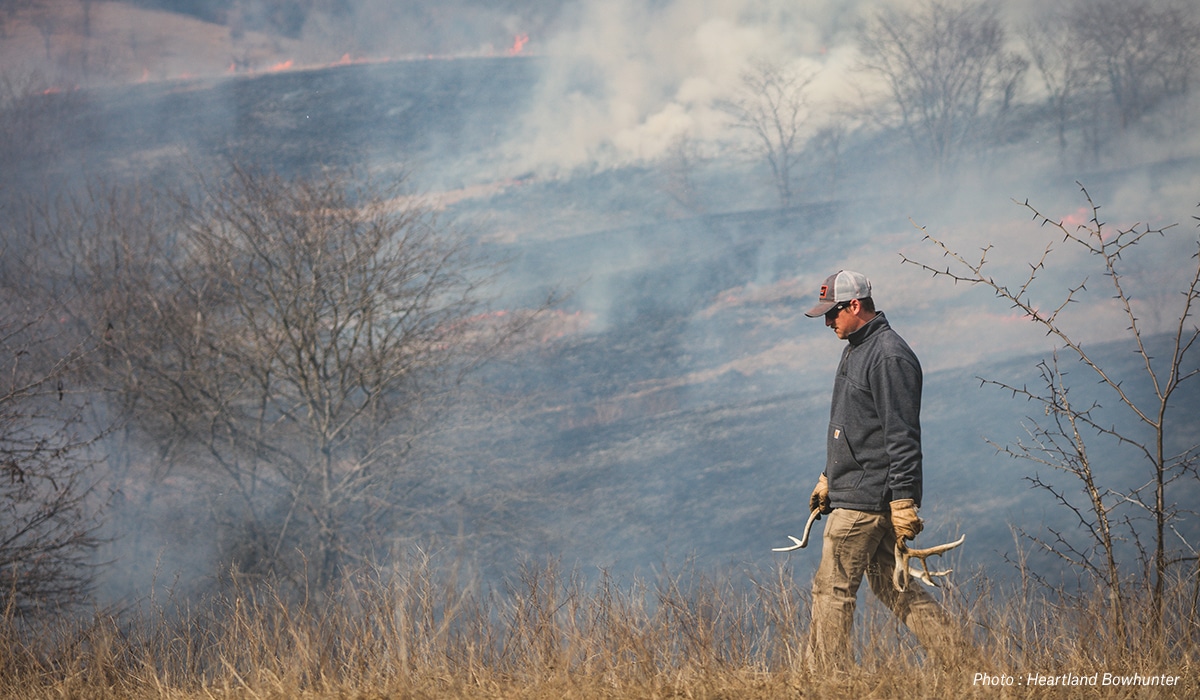A prescribed burn is one of the most impactful and effective land management tools a hunter can use for improving areas for deer, turkey, and other wildlife. State wildlife agencies all over the country have employed this cost-effective practice on public lands for decades.
Prescribed or controlled burns improve wildlife habitats by controlling competing vegetation, removing leaf litter, increasing short-term forage for grazing, killing off unwanted hardwood saplings, and returning nutrients to the soil. These benefits allow new growth of grasses and herbaceous plants that are typically more nutritious for wildlife than what was burned. For deer, specifically, prescribed burns produce more cover and forage, which should attract more deer to the area.

Before You Burn
Prescribed burns are not meant to be a one-time tool if you want to effectively manage land for better hunting. But it’s also true that you won’t want to burn all the land all the time. The National Deer Association (NDA) is an excellent resource for prescribed burns, and it breaks down fire frequency based on your region and your goals. In short, most areas will fall between a two- and six-year burn rotation, so it’s important to learn the proper way to plan, set, and manage an active burn. This timeline is in sync with historical data that shows (at least in the South) before European settlers arrived, naturally occurring, lightning-caused fires would burn the pine forests every two to seven years.
But why burn at all? The answer should lie within the goals you have for the property. Questions you should ask yourself are what are my current habitat conditions, do I want more cover or hardwood mast, or do I want more native grasses and forbs? You should also consider the long-term goals you have for your property, which might include managing land for its timber value. Depending on your goals, fire may or may not be in the cards based on factors like tree age, or tree age as it relates to tree species.
The next consideration before a prescribed burn is planning when to burn. In most places, prescribed burns take place between November and March, during relatively dormant seasons and when the weather is more predictable. Burns that occur later, during the growing season, might help with plant diversification and controlling woody vegetation, but they are more difficult to execute.

How To Do a Controlled Burn
If you have never managed a controlled burn before, do not attempt to do it alone or without proper training or guidance. Fire is dangerous. That’s why the first and most important step to take before a controlled burn is to have a written plan in place, prepared by a professional. Contact your local fire department and wildlife agency and ask for their help.
Using onX Hunt’s Area Shape tool, you can map the exact location and acreage of your controlled burn and add it to your plan. You can use the Free Draw tool and map out your intended firebreak, which is an important gap in vegetation or other combustible materials that creates a barrier to slow or stop the progress of a fire.
Always consider the potential smoke path of your fire. Do you have neighbors who mind or a nearby school? If so, let them know your plan.
Prescribed fires are absolutely weather-dependent. Wind speed should be no more than 15 mph, and relative humidity should be ideal for your location. If you’re new to prescribed burns or have limited experience, use the 60:40 Rule. The 60:40 rule says you should burn with an air temperature of less than 60°F, a relative humidity greater than 40%, and a wind speed of 5-15 mph measured at six feet above the ground’s surface. Tip: check weather conditions ahead of time with onX Hunt’s Weather Forecast tool.
Fire is more controllable when it can “walk” downhill. If you can burn high ground to low ground, you’ll have a safer prescribed burn. It will also burn slower, as a fire burning uphill will suck oxygen like a vacuum and burn hot, which not only poses the risk of getting out of control but also damaging trees.
You must have enough people and the right equipment to conduct the burn and monitor its perimeter until it is completed. This could be as few as two people for a very small burn, or over a dozen people for a very large burn.
Once the controlled burn has been completed, come back to the property in the weeks following the burn. You’re looking over the area to make sure you’ve met your goals, removed enough of the duff layer you wanted, and that you didn’t damage or scorch standing timber.

Prescribed Burning Benefits
The benefits of prescribed burning are to nurture, introduce, and continue providing forage for game animals while also removing unwanted competing vegetation, pest insects, and diseases. But regular fires do more. They reduce hazardous fuels from building up and lessen the likelihood that extreme fires will break out on the property.
Fires also recycle nutrients back to the soil, encouraging native plants and animals to return to the ecosystem.
Back in 1966, the USDA Forest Service published “A Guide for Prescribed Fires in Southern Forests,” which continues to be updated and used as a resource for both techniques and benefits. It’s recommended reading if you want to deep-dive into how, why, and when to burn.